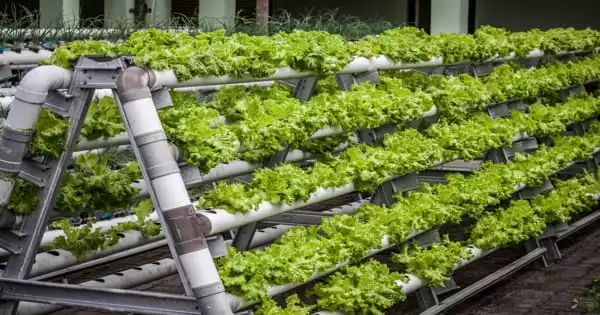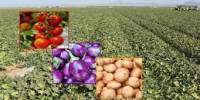Vertical farming is an agricultural practice in which crops are cultivated on top of each other rather than in regular horizontal rows. Growing vertically conserves space, resulting in a higher crop yield per square foot of area used. Vertical farms are mostly found indoors, such as in a warehouse, where they can regulate the ambient conditions that allow plants to thrive.
Vertical farming is a farming practice that produces plants in vertically stacked layers utilizing soil, aeroponic, or hydroponic technologies. Although it primarily aims to produce food in a difficult environment, it has the potential to be a solution to the problem of limited arable land as the world’s population grows. According to food futurists and researchers, high-tech vertical farming enterprises will be the future of agriculture. It can be used anyplace. Vertical farming is virtually immune to pests, viruses, and bad weather. Furthermore, we can now produce local, fresh, high-quality, and lower-carbon food all year round utilizing this technology.
Farms are commonly conceived of as vast swaths of land that crisscross the landscape. Their size has tended to confine them to rural areas, far from the cities that would consume their abundance. But Columbia University’s Dickson Despommier wants to flip that paradigm on its head – literally. He would cultivate in the city rather than the country. Instead of letting crops grow across acres and acres of land, he’d plant them floor by floor in structures.
An elevator might you take you up to 10th floor – tomatoes and peppers, or 15th floor – strawberries and pumpkins. And because the lighting for these indoor farms could be supplied by color-tuned LEDs, there’s no reason why the plants could not be grown in windowless basement complexes.
Despommier explained at the inaugural World Science Summit in New York City that the objective is to return the land to nature rather than steal its productivity for urban food production. It is also significantly more energy efficient to truck crops within a city, maybe moving them only a few miles, rather than shipping them hundreds of miles or more to customers.
He envisions floor-to-ceiling, glass-walled skyscraper farms, with each structure optimized for internal reflection of incoming sunshine. LEDs would be used to supplement photosynthesis’s energy demand as needed.
It’s a fascinating concept. As a Corn Belt native, I was never inspired by the grandeur of monoculture croplands that stretched as far as the eye could see. Much of rural America would benefit from the restoration of trees, shrubs, and ecological diversity.

I also admire the notion of reintroducing agriculture to the people. Too few children understand where their food originates from. The possibility that it could one day come from the building down the street would reestablish appreciation for the notion that agriculture, not grocery shops, supplies food.
Despommier acknowledges that this paradigm shift might have problems supplying meat from the hoof. But for the leafy, fruity, or finned staples, he says, urban agriculture might just be the ticket.
Advantages
Vertical farming is best defined as growing food indoors and on vertically stacked layers. It utilizes technologies known as controlled environment agriculture (CEA):
- Aeroponics: Plants are suspended in the air and sprayed with nutrient-rich solvents
- Hydroponics: Plants are cultivated in a nutrient-rich water-based solution
- Aquaponics: Plants are cultivated in an ecosystem which also houses fish
Vertical farms can grow 1 ton of lettuce with just 17% of the space needed for a traditional farm, meaning they are much more space efficient. This is a direct solution for land degradation, but the benefits don’t end there.
However, scaling up vertical farming poses numerous obstacles. The biggest one is the cost of such setups. Another key issue is the practicality and availability of technologies. Vertical farming relies heavily on regulated aspects such as sunlight and airflow utilizing physical means to be effective in the long run. To make vertical farming a reality, various technology and gadgets such as LED lights, drip irrigation, and airflow controllers must be integrated. As a result, today’s farmers require adequate and targeted technology to scale up vertical farming. Vertical farming must become more affordable to farmers as technologies mature.
Overcoming obstacles such as high power usage and extending crop range with the help of technology would undoubtedly raise farmers’ interest in vertical farming. The world’s population is anticipated to reach 9.7 billion by 2050, making feeding them a tremendous issue. Every day, we lose arable land as a result of industrial development and urbanization. Scientists estimated in 2015 that the Earth had lost a third of its arable land over the previous 40 years.
















